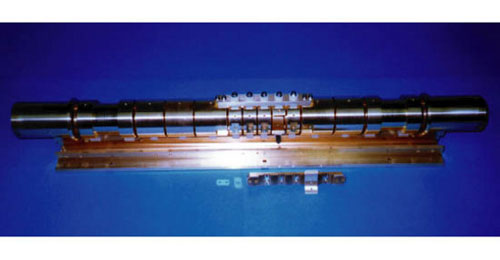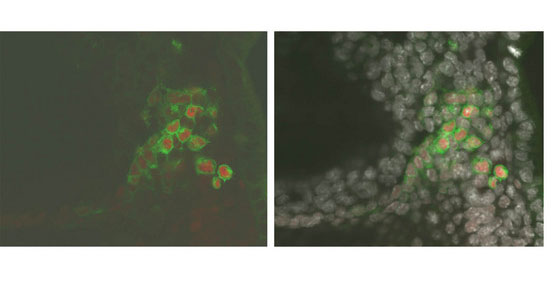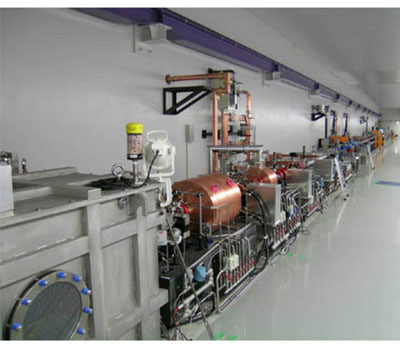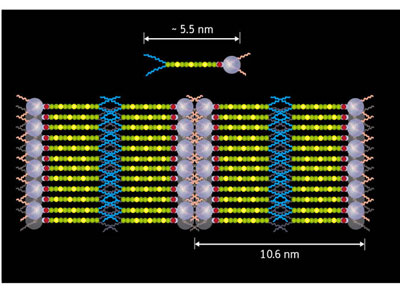Antimatter trap to test nature's symmetry
 RIKEN scientists have developed a method for trapping and manipulating antimatter that could be key to solving one of the universe?s biggest mysteries.
RIKEN scientists have developed a method for trapping and manipulating antimatter that could be key to solving one of the universe?s biggest mysteries.
Oct 31st, 2008
Read more
 RIKEN scientists have developed a method for trapping and manipulating antimatter that could be key to solving one of the universe?s biggest mysteries.
RIKEN scientists have developed a method for trapping and manipulating antimatter that could be key to solving one of the universe?s biggest mysteries.
Oct 31st, 2008
Read more An animal's reproductive capabilities are established early in development, when a homogeneous embryonic cell population gives rise to two distinct cell types - somatic cells that form the vast majority of body tissues, and primordial germ cells (PGCs) that ultimately yield spermatozoa or ova.
An animal's reproductive capabilities are established early in development, when a homogeneous embryonic cell population gives rise to two distinct cell types - somatic cells that form the vast majority of body tissues, and primordial germ cells (PGCs) that ultimately yield spermatozoa or ova.
Oct 31st, 2008
Read more Researchers in Japan report on the superior properties of extreme ultraviolet FEL laser radiation from a first-test system.
Researchers in Japan report on the superior properties of extreme ultraviolet FEL laser radiation from a first-test system.
Oct 31st, 2008
Read more A team of Japanese researchers have designed liquid crystals - a phase that flows like a liquid but has short-range order between the molecules - that spontaneously assemble to form a donor-acceptor array for photovoltaic devices.
A team of Japanese researchers have designed liquid crystals - a phase that flows like a liquid but has short-range order between the molecules - that spontaneously assemble to form a donor-acceptor array for photovoltaic devices.
Oct 31st, 2008
Read moreConsumers Union, nonprofit publisher of Consumer Reports, today released new product tests showing that 4 out of 5 sunscreens that claimed not to contain nanoparticles actually do contain them.
Oct 30th, 2008
Read moreNanoImpactNet's first Integrating Conference will take place in Lausanne, Switzerland, March 23-27 2009.
Oct 30th, 2008
Read moreIn the quest to slow down and ultimately understand chemistry at the level of atoms and electrons, University of Colorado at Boulder and Canadian scientists have found a new way to peer into a molecule that allows them to see how its electrons rearrange as the molecule changes shape.
Oct 30th, 2008
Read moreThe U.S. Department of Energy's Argonne National Laboratory has teamed with the University of Illinois at Urbana-Champaign, the University of Illinois at Chicago and Northwestern University to form the Illinois Center for Advanced Tribology, which will develop solutions to technical issues related to transportation, health and systems that operate in extreme environments.
Oct 30th, 2008
Read moreIt has been a success for the past six years, and it's back again. The 7th Annual Charlotte Biotechnology Conference (CBC) will be held in the Student Activities Center (SAC) on October 28, 2008 and will feature an array of different speakers elaborating on the different aspects of biotechnology.
Oct 30th, 2008
Read moreThe U.S. Department of Energy is sponsoring the inaugural Science + Energy Research Challenge (SERCh), Nov. 9-10, 2008, at Oak Ridge National Laboratory, which is partnering with Oak Ridge Associated Universities to host the event.
Oct 30th, 2008
Read moreA coalition of Irish universities and colleges came together today for an ambitious plan to develop 'smart' drugs to fight cancer and other life-threatening diseases.
Oct 30th, 2008
Read moreChristoph Cremer durchbricht nach der Konzeption der 4Pi-Mikroskopie 1971 das zweite Mal in seiner Forscherkarriere die Grenze dessen, was bislang in der optischen Mikroskopie moeglich war.
Oct 30th, 2008
Read moreTo increase Europe's microelectronics competitiveness, the Belgian nanoelectronics research center IMEC asks Europe and its governing public authorities to stimulate true cross-border collaborations, not only by setting up networks but also by creating financial means.
Oct 30th, 2008
Read moreThe purpose of the center is the development of processes for organic semiconductor devices such as organic light-emitting diodes (OLEDs) and organic solar cells.
Oct 30th, 2008
Read moreClemson University researchers developing imaging agents to allow a new method of detecting breast cancers have received $180,000 from the Susan G. Komen Breast Cancer Foundation. Breast cancer is the second leading cause of cancer deaths in American women.
Oct 30th, 2008
Read moreUniversity of Utah scientists successfully created a sensitive prototype device that could test for dozens or even hundreds of diseases simultaneously by acting like a credit card-swipe machine to scan a card loaded with microscopic blood, saliva or urine samples.
Oct 30th, 2008
Read more